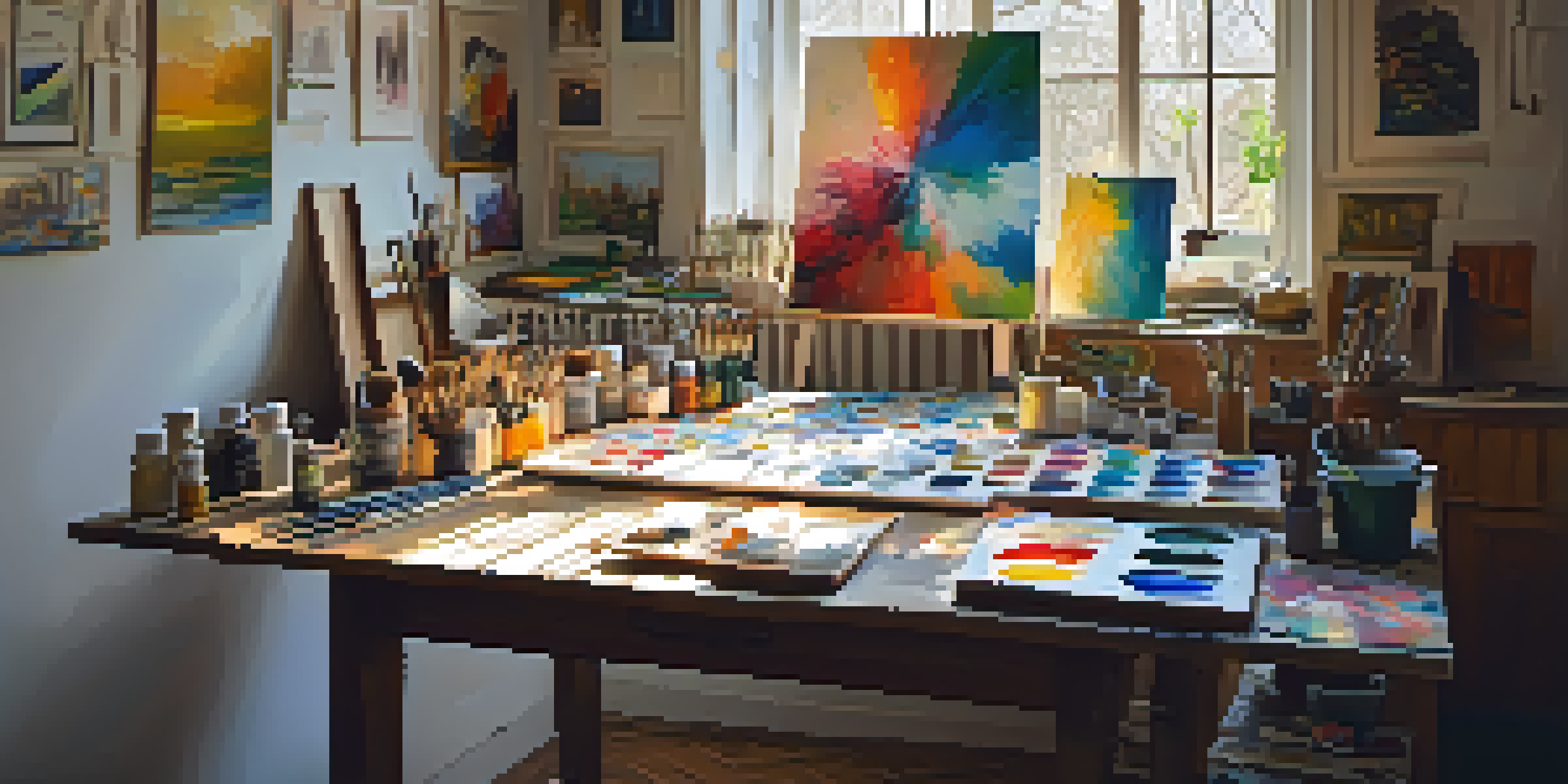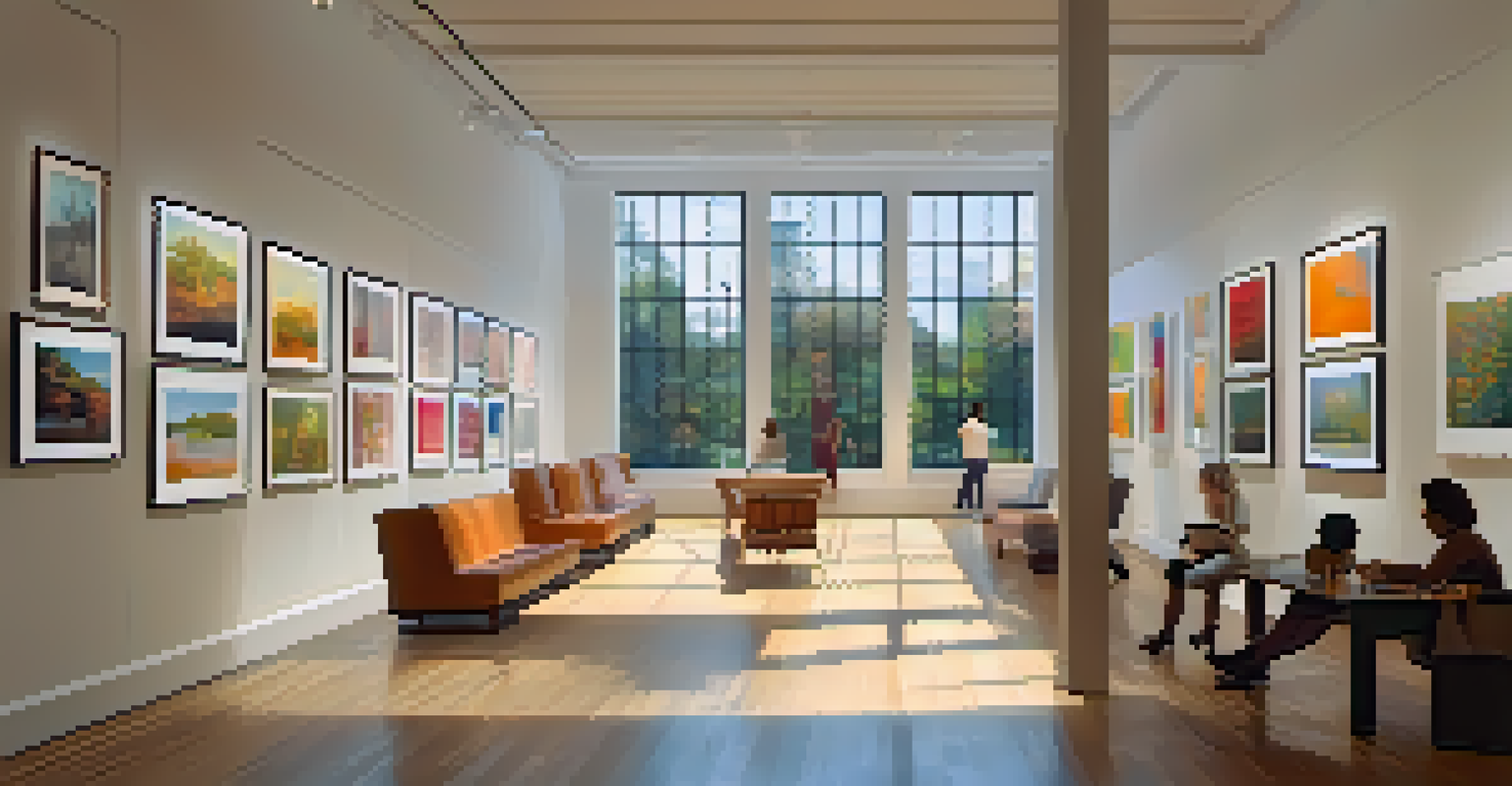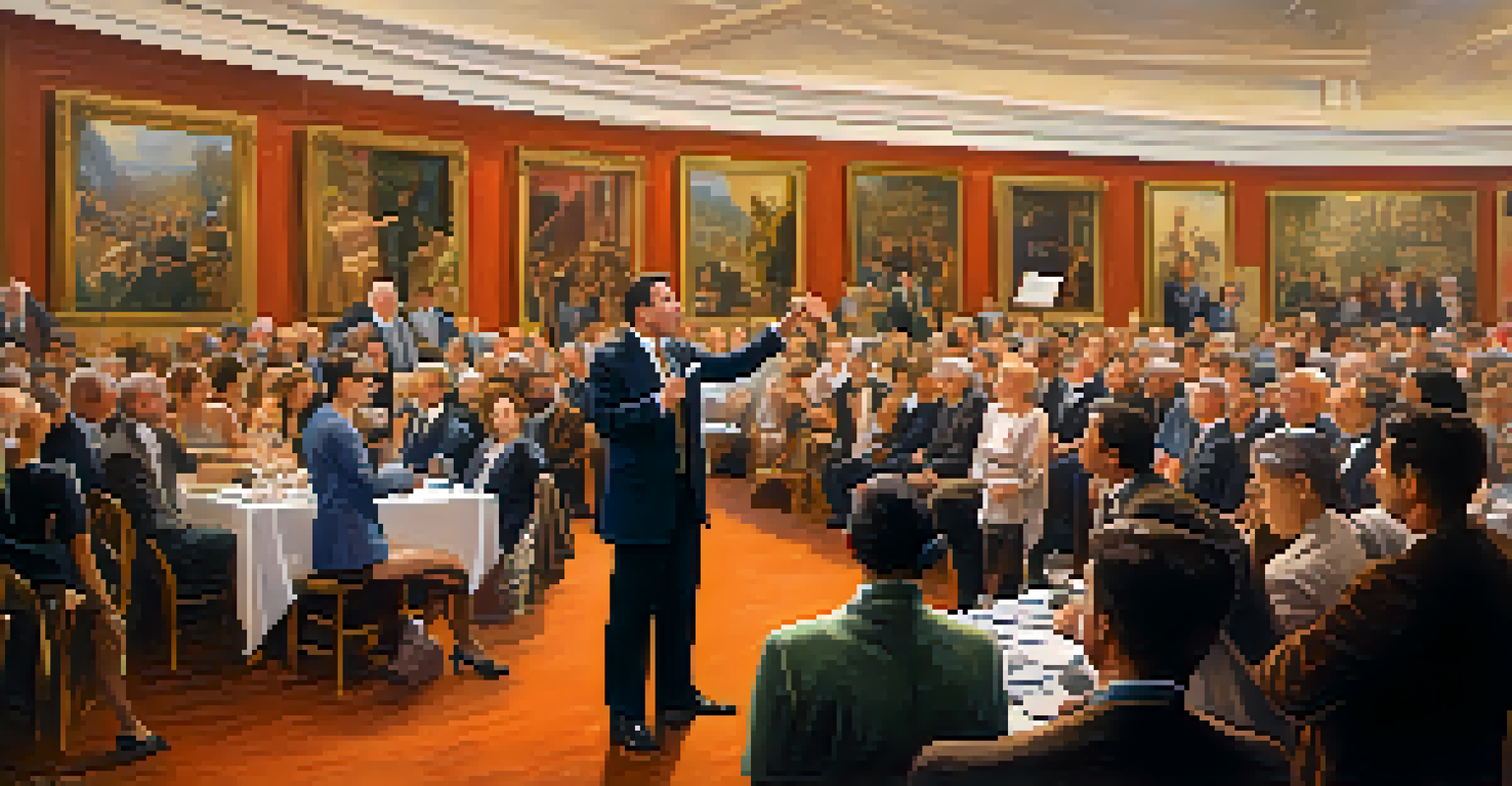Navigating Art Collecting: Online vs. Offline Strategies

Understanding the Art Collecting Landscape
Art collecting is a thrilling journey that allows individuals to express their personal tastes while also investing in cultural treasures. Whether you’re a novice or a seasoned collector, understanding the landscape is essential. This includes knowing the types of art available, the artists behind them, and the market trends that influence their value.
Art is not what you see, but what you make others see.
The art world can feel overwhelming, with galleries, auctions, and online platforms all vying for your attention. It's crucial to take a step back and assess what type of art resonates with you. This clarity will guide your collecting journey, helping you navigate the vast options available.
Moreover, consider the benefits and challenges of both online and offline collecting. Each avenue offers unique experiences, and understanding these can help you make informed choices about how to build your collection.
The Benefits of Online Art Collecting
Online art collecting has revolutionized the way we access and purchase art. With just a few clicks, you can explore galleries from around the globe, making art more accessible than ever. This convenience allows collectors to discover new artists and styles that might not be available locally.

Additionally, online platforms often provide detailed information about artworks, including artist bios and provenance. This transparency can enhance your understanding and appreciation of a piece before making a purchase. Plus, you can compare prices and offerings from different sellers with ease.
Art Collecting: Online vs Offline
Balancing online and offline art collecting strategies can enrich your journey and broaden your collection.
However, it’s important to approach online collecting with caution. Ensure that you are purchasing from reputable platforms, and don’t hesitate to ask questions if you’re unsure about a piece’s authenticity or condition.
Exploring Offline Art Collecting Opportunities
While online platforms are convenient, offline art collecting offers a tactile experience that digital cannot replicate. Visiting galleries, art fairs, and auctions allows you to see and feel the art, making it easier to connect emotionally with pieces. This sensory experience can be pivotal in deciding on a purchase.
The greatest artist is not necessarily the one who creates the most, but the one who creates the most meaningful connections.
Offline events often provide opportunities to meet artists and fellow collectors. These interactions can lead to deeper insights about the art world, and you might even discover hidden gems or emerging talents that aren’t widely known yet. Building relationships in the art community can enhance your collecting journey.
Remember, though, that offline collecting can require more time and effort. Committing to attend events and explore galleries means you need to be proactive in your search for art.
Balancing Online and Offline Strategies
The most successful art collectors often find a balance between online and offline strategies. By leveraging both avenues, you can broaden your horizons and create a well-rounded collection. Online platforms can be great for initial research and exploration, while offline experiences can deepen your appreciation for specific pieces.
For example, you might discover a captivating artist online and then seek out their work at a local gallery or exhibition. This approach allows you to engage with the artwork on a personal level, helping you make more informed purchasing decisions.
Engagement with Art Community
Building relationships with artists and galleries enhances your understanding of art and can lead to exclusive opportunities.
Moreover, utilizing both strategies can help you stay updated on market trends. Online resources can provide instant news, while offline events can offer insider perspectives and networking opportunities.
Navigating Art Auctions: Tips for Success
Art auctions can be thrilling, but they also come with their own set of challenges. Before diving in, educate yourself about the auction process and understand the fees involved, such as buyer’s premiums. Being well-informed can help you avoid unexpected costs and ensure you’re bidding confidently.
Additionally, it's wise to do your homework on the artworks being auctioned. Research the artists, recent sales, and market trends to gauge the potential value of pieces. This preparation will put you in a better position to make strategic bids.
Finally, set a budget and stick to it during the auction. It can be easy to get caught up in the excitement, but having a clear financial plan will help you make rational decisions and avoid buyer’s remorse.
The Role of Social Media in Art Collecting
Social media has become an influential tool in the art world, providing collectors with new ways to discover and engage with art. Platforms like Instagram and Pinterest allow you to follow artists, galleries, and fellow collectors, creating a vibrant community around shared interests. This can be a great source of inspiration and insight into current trends.
Moreover, social media often provides behind-the-scenes looks at exhibitions, studio visits, and artist interviews. These glimpses can deepen your appreciation for the art and the stories behind it. Engaging with artists directly on these platforms can also foster meaningful connections.
Successful Auction Strategies
Educating yourself about the auction process and setting a budget are key to navigating art auctions successfully.
However, be mindful of the information you consume. While social media can be a treasure trove of ideas, it’s essential to verify facts and not solely rely on it for research. Use it as a supplementary tool to enhance your collecting journey.
Building Relationships with Artists and Galleries
Establishing relationships with artists and galleries can significantly enhance your art collecting experience. These connections allow you to gain deeper insights into artworks and the creative process, which can enrich your understanding and appreciation of your collection. Plus, artists often offer special pieces or early access to new works to their patrons.
Attending openings, exhibitions, and artist talks can be excellent opportunities to engage with the art community. You can ask questions, express interest in particular pieces, and make your presence known. This personal touch can lead to meaningful interactions and potential collaborations.

Remember, relationship-building is a two-way street. Support artists by sharing their work, providing feedback, and advocating for their art. This mutual respect can foster a thriving community that benefits everyone involved.